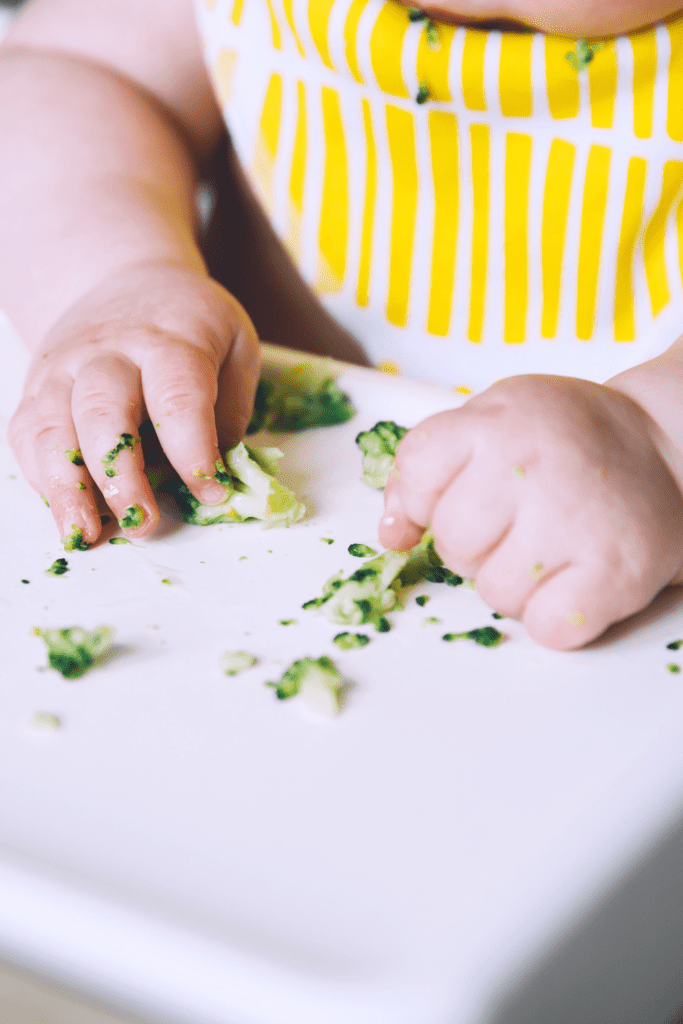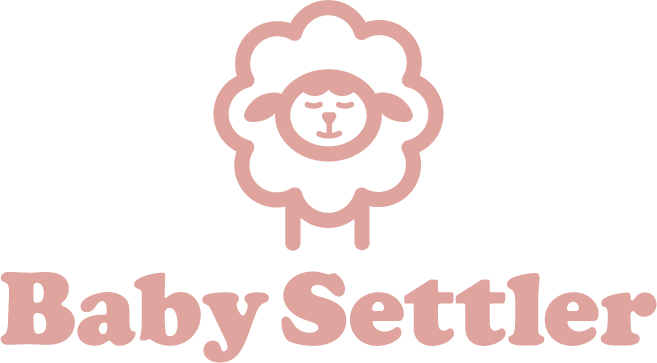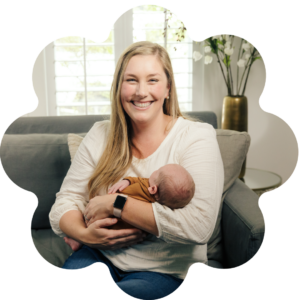
Introducing your baby to solid food is such an exciting milestone! You’ll be adding different flavors to mealtimes and broadening your little one’s palate.
However, what do you do if your baby is fussy and struggling to adapt to this new routine? And, are there certain foods to avoid?
Keep reading for tips on how to know whether your baby is ready for solid food, what food to introduce to them first, and how to make this introduction a fun one.

When To Include Solid Foods In Your Baby’s Diet
The American Academy of Pediatrics recommends incorporating solid food into babies’ diets by six months old.
Some physical markers that show your little one is ready for a shift in their diet includes:
- Sitting up alone
- Controlling their head and neck
- They open their mouth when food is offered
- They’re able to swallow food instead of pushing it out of their mouth
- They’re still hungry after getting a full portion of milk
Although, as Parents points out, “Remember, there’s no need to rush this milestone. Most babies are ready to start solids between 5 and 6 months.”
Don’t start solid foods too soon – their tiny tummies and digestive systems aren’t developed enough yet to take it on. Also, early on, little ones get all the nutrients they need from breast milk or formula.

What Foods To Include First
Start out small with one ingredient at a time. This helps to slowly introduce the new feeding routine to your little one, and it will be easier to see if they have any food allergies.
The CDC points out that certain foods can cause a baby to choke, so getting the texture of the foods you give them right is important. “To help prevent choking, prepare foods that can be easily dissolved with saliva and do not require chewing.”
Cook hard food – such as carrots, potatoes, and apples – long enough so that it can be easily mashed before giving it to baby.
You can mix cereals with breast milk or formula to create a smooth texture and easily digestible meal for your baby.
Foods such as meat, cheese, yoghurt, and pasta can be added at around eight months old.

How To Start Introducing Solid Food
First of all, expect your baby to reject the food at first. It’s something new, and your little one may be weary of shifting habits. Try again in a few days. If your baby continues to reject solid food, chat to your healthcare provider to rule out any medical issues.
Start slow after a bit of their usual milk. Begin their feed with some breast milk or formula, then move to solids while they’re still hungry.
However, don’t try something new when your baby is in a bad mood. When your little one is happy and wide awake, they’re more likely to welcome a new taste.
Instead of coming at them straight away with a spoon full of mush, put your baby in their highchair and put some of the food on their tray. They can play with it and explore it, making them more open to a spoonful of the stuff.
What To Expect points out, “One of the first and best steps in raising a good eater is to model healthy enjoyment of food yourself. Babies who see adults eating good food and enjoying it are more likely to be interested in following their example.”

Want To Keep Breastfeeding, Too?
If you want to continue giving your little one breastmilk as you make the transition in their diet, it’s important to keep your supply high.
As your baby drinks less breastmilk and eats more solids, continue pumping your breast milk as your body works on a supply and demand basis.
Tell your body to continue producing milk by pumping and draining your breasts fully.
To help you keep track of your pumping and for tips on how to store your breast milk, click here for my free guide.
While an exciting milestone in your baby’s development, adding solid food to their diet can also be stressful if they don’t enjoy the new flavors.
If your little one is struggling to eat solid food after six months of age, they may have sensory aversions to food, meaning that they’re not a fan of the texture of the food. If this is the case, Your Kid’s Table suggests, “Build off of textures that your child is preferring. Think about making small changes to the foods they already like by changing up the brand, flavor, etc. This will help build a bridge to new foods in a way that is comfortable.”
Don’t make things overly complicated when you start out, mama. Remember, a simple piece of mashed up pumpkin is like a whole new world to a baby.




